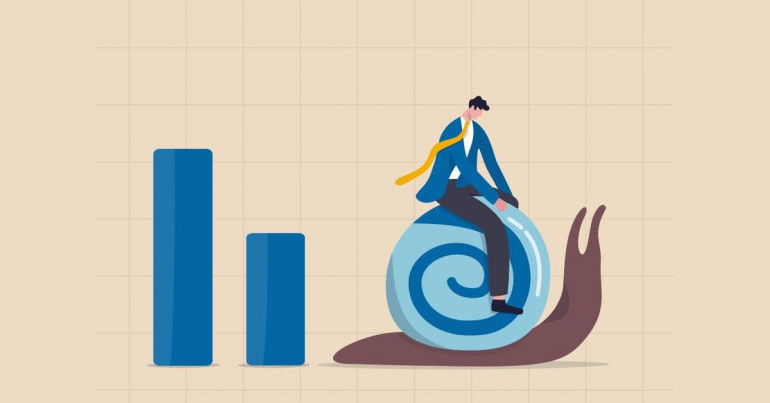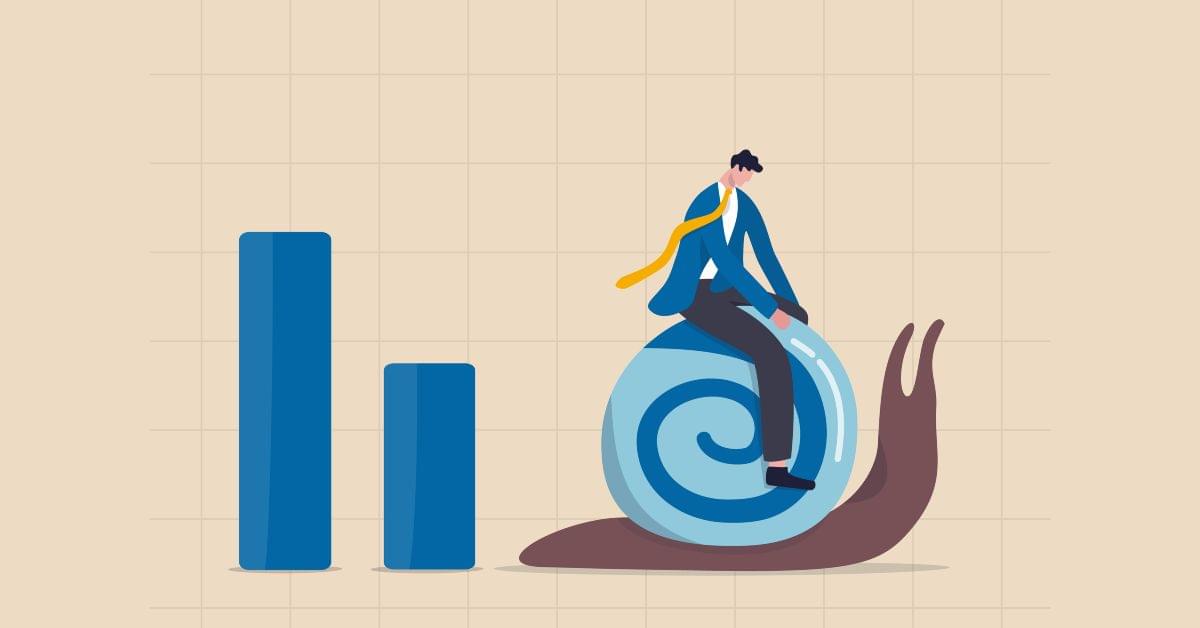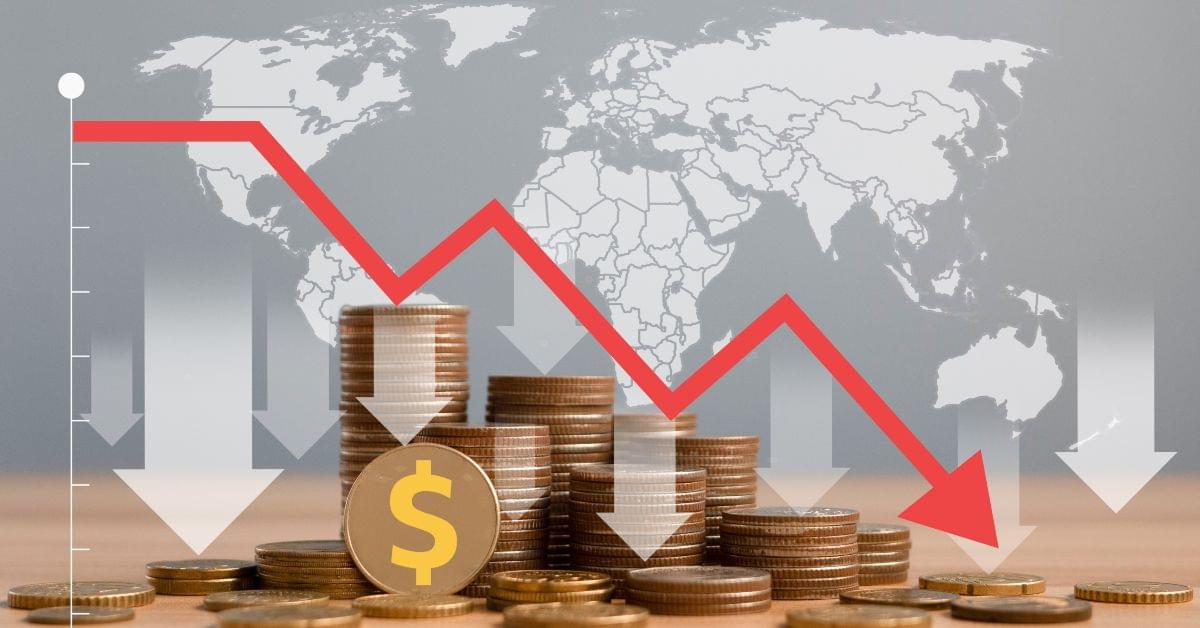
The Bank of England’s recent rate hike was accompanied by a mixed bag of predictions. While, on the one hand, a recession is no longer expected, inflation in the UK is now forecast to fall more slowly than previously expected, only reaching 2% by the end of 2024. So what has changed – or not – and why is it taking so long to return to previous norms?

What causes inflation to rise and fall?
As we explained earlier this week, the Bank of England has a target to keep inflation at around 2%, with a view to helping economic growth by maintaining price stability. It now expects that target to only be hit by the close of 2024 or even 2025.
Inflation itself is a measure of the speed at which prices for services and goods are rising or falling. Price rises can happen for a variety of reasons, including cost-push and demand-pull. Cost-push refers to when rising raw material or commodity costs push the prices of goods and services up, causing inflation to rise. Demand-pull is when consumer demand for goods or services outpaces supply, meaning that suppliers can put their prices up.
Monetary policy also has a significant impact: an expansionary policy, whereby banks lower interest rates to make saving less attractive and spending more attractive, can help to increase demand and grow inflation.
As you can probably guess, monetary policy is also a key factor in reducing inflation – or at least slowing its rise. By raising interest rates, saving becomes more attractive and consumers start to spend less, reducing demand.
Likewise, if costs come down, and those cost reductions are passed onto the consumer, then we may see inflation decrease.
Why is inflation still so high in the UK?
So, with a basic overview of how inflationary pressures work, what is causing inflation to be so stubbornly slow to come down in 2023?
Food price lags between wholesale costs and the consumer
Food prices are perhaps among the most salient consequences of inflation in the UK for many of us on a daily basis. However, they’re also symptomatic of both the growing costs of food production and the purchase model that are helping to drive that inflation.
On the one hand, costs for producers, growers and retailers have increased massively with the increase in energy prices and disruption in the global supply chain from the war in Ukraine and adverse weather conditions in Europe.
On the other hand, wholesale food prices have begun to fall globally. However, British retailers maintain that those cost cuts take three to nine months to reach our supermarket shelves, often due to the purchase model with a long gap between ordering and production.
It’s precisely this that has led the BoE to cite the slow “pass-through” time to consumers as the biggest factor in the increase in its inflation forecast.
Consumer expectations allow for increased margins
We know that demand can increase inflation, but there’s also the case that so-called built-in inflation means that consumers come to expect a particular rate of growing costs, allowing prices to rise even when costs could fall. There are rumours this week of just this happening in fuel prices. The Competition and Markets Authority has announced this week that it is investigating whether margins are unnecessarily increasing on petrol and diesel.
The argument – as yet unproven – is that the CMA has evidence that at least one supermarket targeted a higher fuel price margin last year. By the nature of competition, this could then have caused others in the industry to likewise raise their prices even where it wasn’t necessary.
It’s important to note that the CMA does say at this stage that it hasn’t seen “evidence of competition problems”.
Help for families and a tight labour market grow spending
It might seem counterintuitive to be forecasting more spending in a cost of living crisis, but the Bank of England does expect us to be loosening the purse strings in the coming months. The March Budget’s help for families, such as the childcare subsidies, as well as slowly growing business and consumer confidence, could lead to both higher household and corporate spending.
Likewise, the tight labour market – meaning that unemployment is relatively low – implies that, despite interest rate hikes to make saving more attractive, households may be less inclined to precautionary saving. With unemployment now forecast to remain below 4% until the end of next year, that situation doesn’t look likely to change any time soon.
High energy prices continue to put pressure on costs
Since the Russian invasion of Ukraine, energy prices have skyrocketed – domestic gas prices, for instance, rose 129% from March 2022 to March 2023. While energy prices have even begun to fall, for the moment the Government doesn’t expect them to break through the floor of the Energy Price Guarantee until the second half of this year, according to a House of Commons briefing.
For the moment, then, energy costs still represent a significant increase in costs for consumers and businesses alike, acting as a major cost push. Predictions so far also have suppliers being cautious with the return of competition to the market, meaning that there will be very little of a competitive “race to the bottom” in fixed-tariff pricing for some time. It’s also not inconceivable that, after 29 companies failed between 2021 and 2022, consumer behaviour will also trend towards caution rather than switching suppliers each year.

What does slow-falling inflation mean for those with international currency exposure?
The biggest takeaway for anyone making international transfers is that prices seem set to rise at a much greater rate than 2% for quite some time yet.
With the pressure that this places on budgets, you need to make sure you’re controlling any other sources of cash burn. Take, for instance, the risks of the currency markets. A sudden drop in the markets can add significant costs to large transactions – and makes it even more difficult to plan ahead than it already is in these times.
If you put into place even simple hedging strategies, helping to lock yourself in a fixed exchange rate for the next year, you know that you are at least totally protected against this risk.
Alexander Fordham
Alexander is a writer specialising in foreign exchange and finance for companies with cross-border exposure. He’s written on topics including currency risk, international taxation and global employment for seven years. You can find him out hiking, travelling and working from Spain in the sunnier months.



